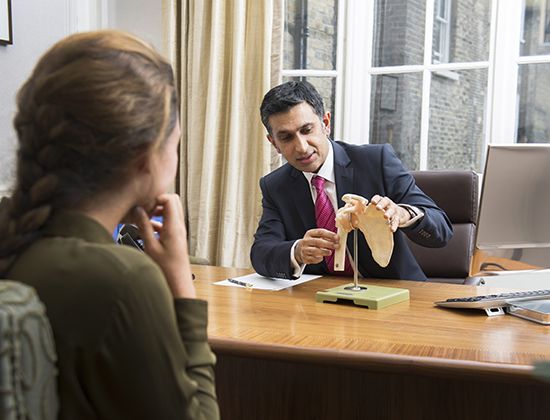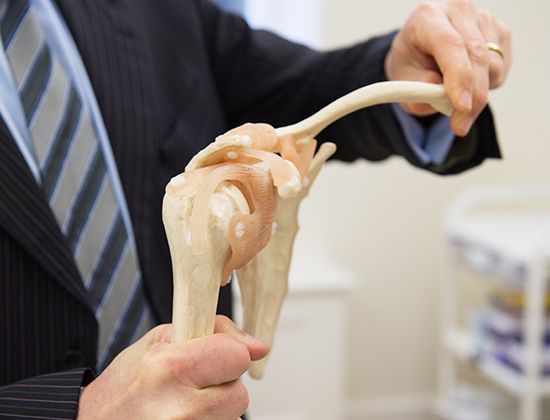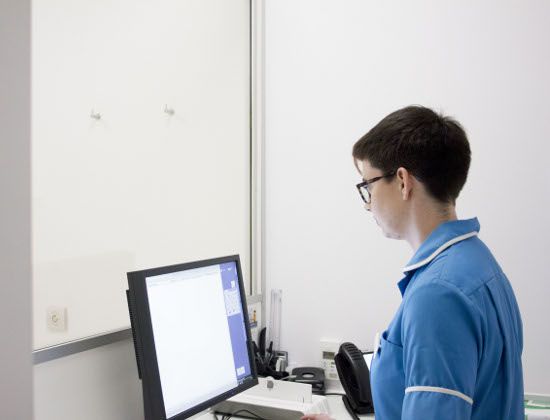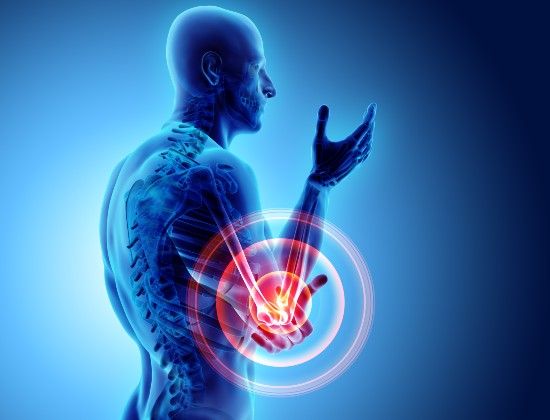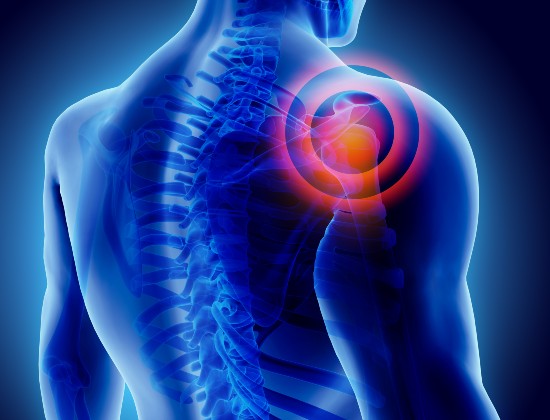Rotator cuff tears (partial and full thickness)
The upper arm is held in place within the shoulder joint by the rotator cuff which is a network of muscles and tendons that covers the ball (humeral head). The rotator cuff (a mechanism composed of four tendons that blend together) arises from the shoulder blade (scapula) and helps link the upper arm to the shoulder blade.
A small fluid-filled sac called a bursa helps to protect and lubricate the tendons of the rotator cuff.
A partial tear of the rotator cuff is when the tendon is damaged but not completely ruptured (torn); a full thickness tear is where the tendon has torn completely through, often where it is attached to the top of the upper arm (humerus), making a hole in the tendon. Rotator cuff tears are more common in people over the age of 40.
Carrying on with normal activities if you are in pain can cause further damage to your rotator cuff, in some cases making the tear more serious.
What causes it?
Degeneration (wear and tear) due to fraying of the tendons over time. This can be due to repetitive stress, common in weightlifting, tennis or rowing. Bone spurs or osteophytes (bony lumps around the joints) which develop with age. This condition, also known as shoulder impingement, can rub against, and tear, the tendon. Poor blood supply, a natural part of ageing, which can lead to a tear
What are the symptoms?
- If due to an injury, there is sudden pain, a sensation of ‘snapping’ and sudden weakness in the arm
- Weakness in the shoulder, ,making everyday activities difficult
- Pain when raising or lowering the arm and when resting, particularly at night if you lie on the affected side
- Crunching or cracking of the shoulder as it moves
How is it diagnosed?
Having discussed your symptoms, assessed your range of motion and strength and checked for any other problems such as a pinched nerve, the specialist’s diagnosis is usually backed up by an X-ray which can also show up other problems such as osteoarthritis or bone spurs (bony lumps around the joints) and, in some cases, an ultrasound or MRI scan to show the extent of the tear.
How is it treated?
Non-operative treatment: you may find your symptoms improve if you rest your shoulder, take anti-inflammatory medication (if advised by your doctor) and follow a gentle exercise programme to improve your strength and movement. You may also be offered a steroid injection to help relieve your pain and inflammation. However, in some cases the tear may increase and many people do not regain their former strength without surgery.
Surgery: if your symptoms don’t improve and/or you are finding it difficult to continue with your normal activities, your specialist may recommend surgery to repair the rotator cuff by reattaching the tendon to the head of the upper arm bone (humerus). This is usually done using arthroscopy.
Important: This information is only a guideline to help you understand your treatment and what to expect. Everyone is different and your rehabilitation may be quicker or slower than other people’s. Please contact us for advice if you’re worried about any aspect of your health or recovery.
